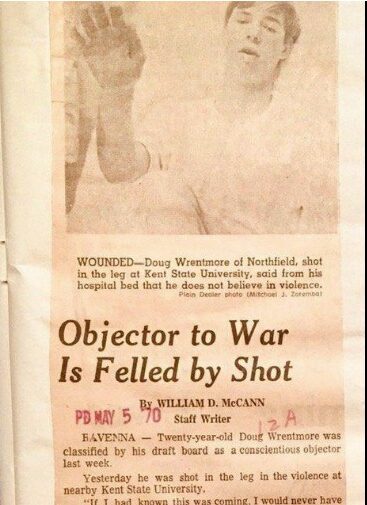
Courtesy of Bastrop Advertiser
May 18, 2020
By Bill McCann
Reading recent articles about the 50th anniversary of the student killings by Ohio National Guardsmen at Kent State University brought back a flood of sad memories. It was a time and place I will never forget. No one should.
In 1970, students were protesting at universities nationally against what they considered to be an unjust Vietnam War. Kent State grabbed headlines when Ohio Gov. Jim Rhodes ordered the National Guard to the university on May 2, 1970, following student protests and the burning of the Reserve Officers’ Training Corps building. On May 4, Guardsmen confronted a crowd of unarmed Kent State students and opened fire, killing four and wounding nine.
I was among a dozen Cleveland Plain Dealer news staff assigned to the story. My job was to write a sidebar to the main story. My beat was science and environment, but in emergencies any reporter could get the call. I was paired with a photographer and we headed for Kent State, about 40 miles southeast of Cleveland.
When we arrived on campus, the shooting had ended. People were walking around in shock. Some were crying. We learned that some students had been rushed to a nearby hospital. We headed there and asked to interview a hospital official. While we waited, a harried man and woman entered and identified themselves as the parents of a shooting victim. An aide went to find a doctor. I identified myself and asked to interview them and their wounded son. They declined.
When the doctor arrived, I heard him tell the parents their son had a non-life-threatening leg injury caused by a stray bullet. He had not been near the demonstration. As the relieved parents waited for an aide to take them to their son, I reminded them his story should be told, lest people critical of the demonstrators think he was one of them. They agreed.
We all followed the aide to the hospital room. I interviewed the 20 year-old student, Doug Wrentmore, his parents and a younger brother, also a Kent State student. The photographer snapped pictures of Wrentmore, who said he opposed violence and had been classified as a conscientious objector. I had my story.
Later, I saw a middle-age man sitting alone in a hospital corridor with his head in his hands. He said his daughter had been shot. He was waiting to hear details. His name was Krause. I identified myself. He tearfully opened up to me as I scribbled notes. His daughter was a freshman, a brilliant student who hated war, he said. “Why did they have to shoot her?” I learned later that Allison Krause was one of the four dead students. My heart ached for that man.
The world has changed in many ways since the Kent State killings. There were no cell phones or security cameras or social media back then to record and report. Our enemies then, including Russia and North Vietnam, are now called friends.
There also are similarities between then and now.
Today, students are leading global protests against governmental inaction over climate change, much like they led the opposition to war at places like Kent State half a century ago.




